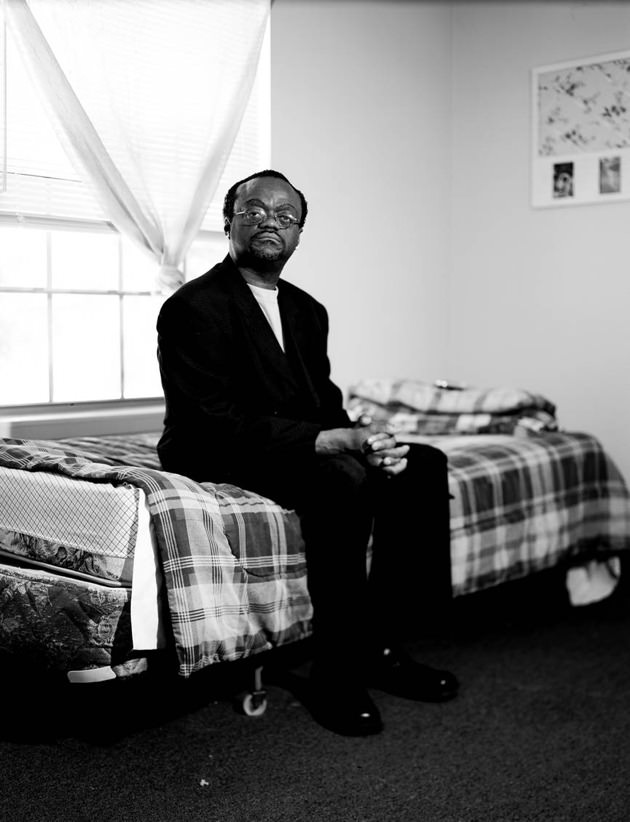A new report by the Bureau of Justice Statistics (BJS) provides grim reaffirmation of something we already knew: sexual violence is epidemic within our country’s prisons and jails. According to the report, 64,500 of the inmates who were in a state or federal prison on the day the latest BJS survey was administered had been sexually abused at their current facility within the previous year, as had 24,000 of those who were in a county jail that day—a total of 88,500 people.
In fact, as we’ve explained before, the true national total is much higher. The BJS numbers don’t include thousands who we know are sexually abused in juvenile detention and other kinds of corrections facilities every year, nor do they account for the constant turnover among jailed detainees. Stays in jail are typically short, and several times as many people pass through jail in a year as are held there on any given day. Overall, we can confidently say that well over 100,000 people are sexually abused in American detention facilities every year.
As appalling as this figure is, mere numbers can obscure what is at issue here. So consider the case of Scott Howard. Scott was a gay, non-violent, first-time inmate in a Colorado prison when he was targeted by members of the “2-11 crew,” a white supremacist gang with over 1,000 members in prisons throughout the state. For two years he was forced into prostitution by the gang’s leaders, repeatedly raped and made to perform oral sex. Even after he told prison staff that he was being raped and needed protection from the gang, Scott was told that nothing could be done unless he named his abusers—even though they had threatened to kill him if he did. Because Scott is openly gay, some officials blamed him for the attacks, saying that as a homosexual he should expect to be targeted by one gang or another. And by his account, even those officers who were not hostile didn’t know how to respond to his reports, because appropriate procedures were not in place. They failed to take even the most basic measures to protect him.
Ultimately, despite his fear, Scott did identify some of the gang members who had raped him. Not only did the prison authorities again fail to respond, they later put Scott in a holding cell with one of his previous assailants on the day he was to be released from state custody. Again, he was beaten and forced to perform oral sex. Scott had a civil lawsuit settled in his favor recently, winning financial damages and seventeen policy changes that will now become mandatory in the Colorado prison system. Otherwise, however, nothing about his story is unusual.
In 2003 Congress passed the Prison Rape Elimination Act (PREA), legislation that, among other things, called into being the bipartisan National Prison Rape Elimination Commission (NPREC), a panel of experts charged with devising national standards for the detection, prevention, reduction, and punishment of sexual abuse in detention. But the implementation of these standards is now being held up, because, as Attorney General Eric Holder has explained, according to PREA the new rules should not “impose substantial additional costs compared to the costs presently expended by Federal, State, and local prison authorities.”
Last September, the Justice Department commissioned Booz Allen Hamilton to study what it would cost to implement the NPREC standards. Unfortunately, the results of that study are too flawed to be of much use. Even more concerning is that Mr. Holder has commissioned no study of the benefits of reducing prisoner rape; nor, apparently, does he plan to. Yet as a brief submitted to the Department of Justice by New York University Law School’s Institute for Policy Integrity makes clear, “substantial additional costs” can only be understood in relation to the standards’ projected benefits. Moreover, Mr. Holder is legally obligated to analyze the costs and the benefits of the new standards together: he cannot give greater emphasis to one half of the calculation than the other. By failing to perform proper analysis, the Attorney General is delaying the reform mandated by a unanimous Congress in passing PREA—and he has already missed his statutory deadline for issuing a final rule on the standards by more than two months.
Prisoner rape is far more a legal and moral issue than a financial one. Since cost considerations are impeding reform, however, it is worth taking a closer look at the true financial implications of sexual abuse behind bars. There are at least two ways in which the Department might try to estimate the value of reducing sexual abuse in detention. One—called “contingent valuation,” and used frequently by environmental economists—seeks to assign dollar-values to goods not traded in the marketplace. Using its techniques, a recent study concluded that the public values the prevention of a single incident of rape or sexual assault at $237,000, a greater worth than it places on preventing any other kind of crime except homicide.
Advertisement
Alternately, the Justice Department can try to quantify particular, identifiable savings and benefits of preventing prisoner rape, and weigh them against particular, quantifiable costs. The costs (no matter how benefits are measured) are the investments needed by corrections systems to comply with the recommended standards, divided by the Department’s estimation of the percentage by which the standards will actually reduce sexual abuse in detention. As for the benefits, a partial list of those to be considered might begin with the medical cost of treating rape victims, which must be shouldered by corrections systems. This is much more expensive in the prison setting than in the general community, because inmates must be transported to often-distant hospitals and escorted the whole time by security staff. And it is a cost that must be paid, not for every victim of prisoner rape, but for every instance. We can deduce from the new BJS study that victims of sexual abuse in detention suffer an average of three to five incidents apiece.
The Washington Department of Corrections estimates that the cost of providing mental health treatment for victims of prisoner rape or sexual assault—which is different from immediate medical care—is approximately $9,700 per victim. Neither category of care includes treatment for HIV, Hepatitis C, and other sexually transmitted infections, which are of course spread by prisoner rape and also impose great costs on prison health services. Making our prisons and jails safer should have a positive effect generally on the mental health problems that are endemic there. And reducing prisoner rape would also lower the number of suicides and unwanted pregnancies in our prison systems.
Quite apart from the horror it inflicts on the victim, failing to protect an inmate from sexual abuse contributes to the substantial legal costs our prison systems face. While it is extraordinarily difficult for an incarcerated victim to bring a civil lawsuit—the 1996 Prison Litigation Reform Act (PLRA) was enacted with the explicit purpose of limiting prisoners’ ability to be heard in court—prisons have still had to pay hundreds of millions of dollars in damages and fees to inmates who can establish that officials were “deliberately indifferent” in failing to protect them.
When inmates do report sexual abuse in prison, they are often put in “administrative segregation,” isolated housing that can entail being locked alone in a tiny cell for up to twenty-three hours a day. While this is purportedly done to protect them from more assaults, such housing is also used for punishment: inmates in solitary confinement are denied many programs and services, and the extensive isolation often causes or exacerbates mental and emotional problems. It is also enormously expensive. In California, for example, it costs an additional $14,600 per year to house a prisoner in administrative segregation.
Prisons and jails in which sexual abuse is widespread have been shown to be more dangerous than others generally. At such facilities, violence of every kind, importation of contraband, and other problems tend to flourish. Facilities with less sexual abuse thereby have lower overall security costs and fewer security breaches. When prisons are safer for inmates, they are also safer for corrections staff. The various measures called for by NPREC’s standards—among them better surveillance technology and external oversight—will provide a wide range of benefits for the facilities in which they are implemented, going far beyond the reduction of sexual violence.
Preventing prisoner rape will also help inmates successfully re-enter their communities when they’re released from prison (as almost all will be, eventually). Not only will recidivism be decreased and the enormous costs of re-incarceration lowered, this will lower the costs of disability payments, public housing, and other government-subsidy programs. As we know from our extensive work with survivors of prisoner rape, former inmates who have not been sexually abused are far more likely to become members of the legitimate workforce and pay taxes. Severe financial, emotional, and social burdens are removed from the families who support former inmates if their loved ones are released from prison without the lasting trauma of sexual abuse. And the children who depend on those former inmates will also do better. Today, more than a million children in this country have at least one incarcerated parent.
Testifying before a House subcommittee, Attorney General Holder said, “We want to effect substantive, real change, so that the horrors that too often are visited upon people in our prisons [are] eliminated…. It is something that I think needs to be done, not tomorrow, but yesterday.” That was on March 16. In mid-August a Department spokesman said that the Attorney General would send a proposed rule on the standards to the White House Office of Management and Budgets “in the fall.” Even then, however, it will take months for another layer of review. If well over 100,000 inmates are sexually abused every year, that is something like 300 every day, or even more. Since Attorney General Holder said that change needed to come “yesterday”—five months ago now—more than 40,000 people have been sexually abused in detention. Good corrections officers are doing what they can, but they are desperate for the support that binding national standards would give them. It is time for Mr. Holder to act.
Advertisement




